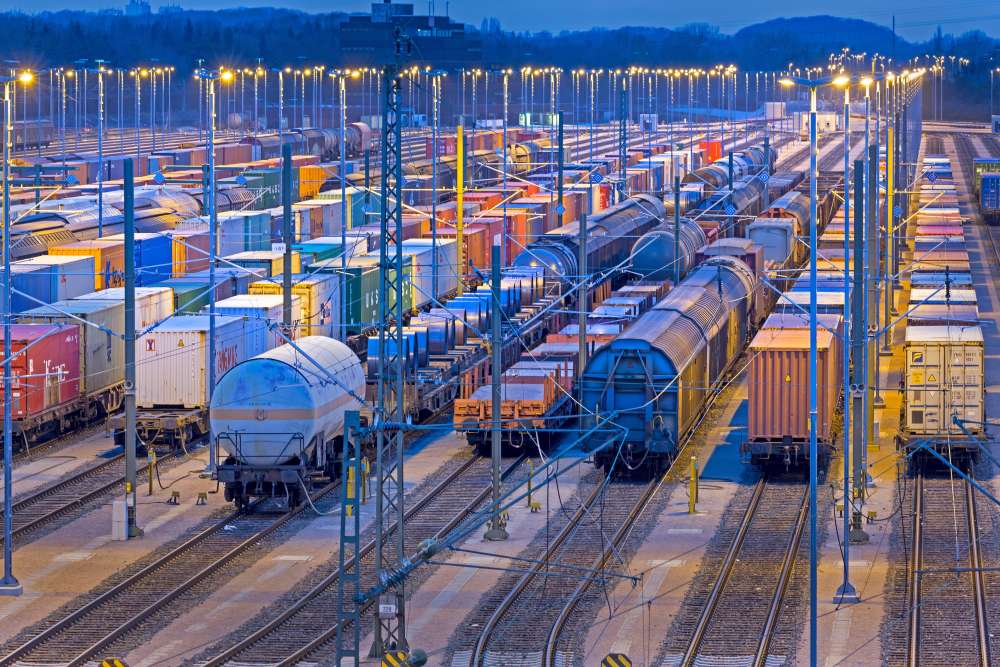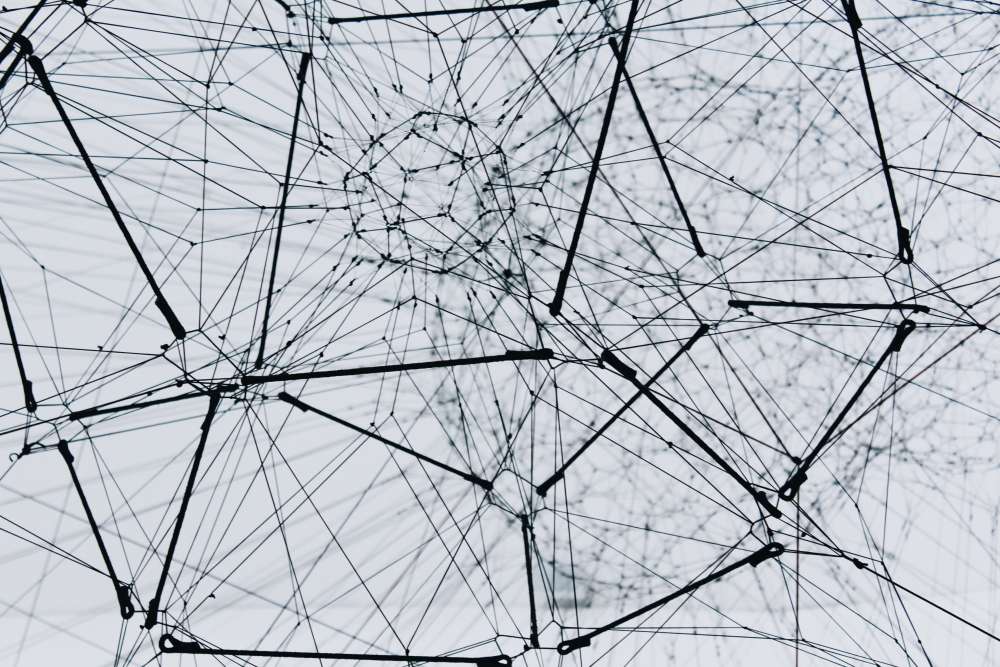To Weaken Russia in Ukraine, Let’s Prioritize the Enforcement of Sanctions

Destroyed Russian tank in Sviatohirsk, Ukraine. (Andriy Andriyenko/SOPA Images/Shutterstock)
Moscow’s low investment in innovation and the recent tightening of export controls have accelerated the decline of Russia’s technological power. But loopholes persist. Germany and the EU must act to close them.
The war in Ukraine has exposed the following truth about Russia’s technological power: the country is highly dependent on the West. Most of Russia’s industry, state authorities, critical infrastructure, and military sector rely on a variety of now-withheld hardware and software from US and European companies. Russia has been cut off from American and Taiwanese semiconductor supplies since it started the war. And it cannot produce these chips at home.
The Kremlin’s claims about the country’s technological sovereignty faced a hard reality check after February 24, 2022 once the United States swiftly introduced a powerful technological sanctions mechanism against Russia following the latter’s invasion of Ukraine. A total of 37 other countries, including EU member states, the UK, Japan, and South Korea, joined the US in applying export controls against Russia. Primarily restricted have been products that support Russia’s military and economic strength, while the flow of other consumer goods, such as mobile devices and laptops, have not been targeted. However, major IT giants such as Apple, Samsung, Oracle and many others suspended their business with the aggressor, effectively making an even broader range of technologies inaccessible to Russia.
Key points:
- Most of Russia’s industry, state authorities, critical infrastructure, and military sector rely on technology from US and European companies, which is now being withheld.
- Russia’s lack of innovations in the tech sector is linked to its limited investment into research and development.
- The enforcement of technological sanctions and closing of specific loopholes is crucial to limiting Russia’s military capabilities in Ukraine.
A History of Western Imports
Historically, Russia’s reliance on Western technologies is not a new phenomenon, but rather an integral part of Russia’s attempts to modernize the country. In the 18th century, the Russian monarch Peter I welcomed foreign specialists and promoted the transfer of know-how from Europe to Russia. Later, the Soviet secret services smuggled Western technologies with military applications and science and technology information behind the iron curtain through opaque suppliers and spies. After the USSR collapsed, Russia could legally obtain and introduce Western technologies for its telecommunication systems, business, state, and personal use, and it integrated successfully into the global internet.
The military sector was no exception. Post-Soviet Russia has widely used Western advanced technologies to modernize its armed forces. The institutional framework and methods for Russia’s defense innovations also partly emulated those of the US. In 2009, in an address to the Federal Assembly of the Russian Federation, then-President Dmitri Medvedev announced the creation of “a modern technological center, something on the lines of Silicon Valley and similar foreign centers.” Shortly afterwards, the Skolkovo Innovation Center was founded, but it failed to catch up with its American paradigm. Furthermore, the Advanced Research Foundation, set up in 2012, was supposed to become Russia’s DARPA (the research and development agency of the US Department of Defense). Taking best practices from “the experience of American colleagues,” the Foundation was tasked with developing innovations and high-tech military and dual-use products.
However, since then Russia’s share of innovations has remained low. The country ranked 45th out of 132 countries in the Global Innovation Index in 2021. It performed barely half as well as the leading countries Switzerland, Sweden and the US. This poor performance is linked to Russia’s scarce expenditure on research and development (R&D). In the last decade, the share of the country’s GDP spent on R&D has hardly changed from around 1 percent, in contrast to the constant rise in the US (2.8 percent) or Germany (3.1 percent). Besides, solely greater R&D expenditure would have done little to affect Russia’s performance in innovation given the unfavorable context: absent structural reforms and the rule of law, deficient intellectual property rights and widespread corruption have posed enormous challenges for innovators as well as the domestic development of an advanced military sector.
Circumvention, Not Substitution
How much Russia’s military depends on Western technologies became clear after Ukraine’s successful counteroffensive, which enabled an examination of captured Russian weapons after February 2022. According to an August report by the Royal United Services Institute (RUSI) in the UK, in 27 of Russia’s most modern military systems, at least 450 components – such as microcontrollers, microprocessors, cameras, sensors, or transceivers – were sourced from Western manufacturers. At least 318 components were manufactured by US-based leading microelectronics companies such as Texas Instruments, Intel, Microchip Technology, and others. Russia has also extensively used high-end tech from European companies. RUSI identified at least 55 unique components originating from the Netherlands, Switzerland, Germany, France, and the UK. The rest of the advanced technologies identified in Russia’s weapons deployed in Ukraine came from Japan, Taiwan and South Korea.
» In 27 of Russia’s most modern military systems, at least 450 components – such as microcontrollers, microprocessors, cameras, sensors, or transceivers – were sourced from Western manufacturers. «
The failure of Russia’s program to substitute Western tech imports, which was started in 2012 and intensified after Russia’s annexation of Crimea in 2014 and subsequent Western sanctions, is obvious. In fact, rather than focusing on the development and implementation of domestic technologies, Russia has in recent years been working hard on establishing opaque schemes and networks to circumvent sanctions and acquire Western technologies. RUSI reports that from 450 identified components, at least 80 had already been targeted by US export controls. Indeed, Russia’s ability to evade restrictions has shown the limits of and significant loopholes in the international sanctions regime and its implementation.
Even the much stronger export controls introduced after Moscow’s full-fledged invasion of Ukraine in 2022 have not prevented the illegal provision of Western technologies to Russia. A recent investigation by RUSI, Reuters and iStories shows that, since February 2022, Russia has significantly increased the import of Western technologies needed for its Orlan-10 UAV (unmanned aerial vehicle). The geographies of the distributors investigated range from the US and Europe to China, South Korea and Hong Kong. Apart from networks that serve to import components for its military-industrial complex, Russia has also created effective illicit supply chains for computers and other hardware manufactured by US-based Intel, AMD, Texas Instruments and Analog Devices as well as Germany’s Infineon, through opaque companies based in Turkey, Hong Kong, China, and Estonia, according to another report from Reuters and RUSI. It is unclear whether this hardware has been used for military purposes, but this cannot be ruled out.
Choke Off Sanctions Evasion Schemes
Hence, the strength of Russia’s technological warfare is closely linked to the effectiveness of its sanctions circumvention schemes. Recently, Russia has successfully adapted even to the unprecedented current export controls and has thus maintained its war machine. Still, while Russia’s ability to circumvent some of the sanctions is confirmed, the actual quantity of such illicit imports is hard to fathom.
It follows that the enforcement of technological sanctions is crucial to significantly limit Russia’s military capabilities in Ukraine. In defining its security strategy and policy toward Russia, the German government, together with its allies, should therefore focus on the prompt identification and prosecution of sanctions evasion networks. The EU’s recent decision to appoint a special envoy to strengthen sanctions enforcement and choke off illegal high-tech shipments via countries including Turkey as well as the EU Commission’s proposal to criminalize the evasion of EU sanctions are appropriate steps. International cooperation between governments, tech companies and the expert community is also key in uncovering and preventing shipments of controlled goods to Russia.
» Russia’s tactical agility might help the regime to avoid immediate decline, but it will not prevent the country’s technological degradation. «
Russia’s tactical agility might help the regime to avoid immediate decline, but it will not prevent the country’s technological degradation. Without access to Western technologies, goods and services, Russia will undergo the process which the economist Branko Milanovic has called “regressive import substitution” meaning it will switch to “inferior, old-fashioned domestic substitutes.” China cannot easily step in and substitute the entire range of technology that Russia urgently needs. What is more, Beijing’s own dependence on Western tech makes it cautious in helping Russia. Huawei, for example, has cut its Russia business and relocated its local staff to Central Asia. Lately, Beijing has also banned the supply of Loongson processors to Russia.
Finally, Russia’s enormous loss of human capital also makes the country’s technological regression inevitable. Even before the Ukraine war, Russia’s IT sector lacked between 500,000 and 1 million specialists, according to the Russian Ministry of Digital Development. Since February 24th, Russia has lost almost a quarter of its leading IT specialists. Russia’s digital economy and innovation industry face a future that is worse than uncertain. The same holds true for the country’s efforts to urgently substitute tech imports.
Alena Epifanova
Research Fellow, Deutsche Gesellschaft für Auswärtige Politik (DGAP)
Keep on reading

Another Undeclared Conflict: Economic Statecraft and Germany
Economics and finance will determine the balance of power between states in the decades to come. Germany should recognize its own sway in this regard – and recalibrate its approach to using economic tools in foreign policymaking.

